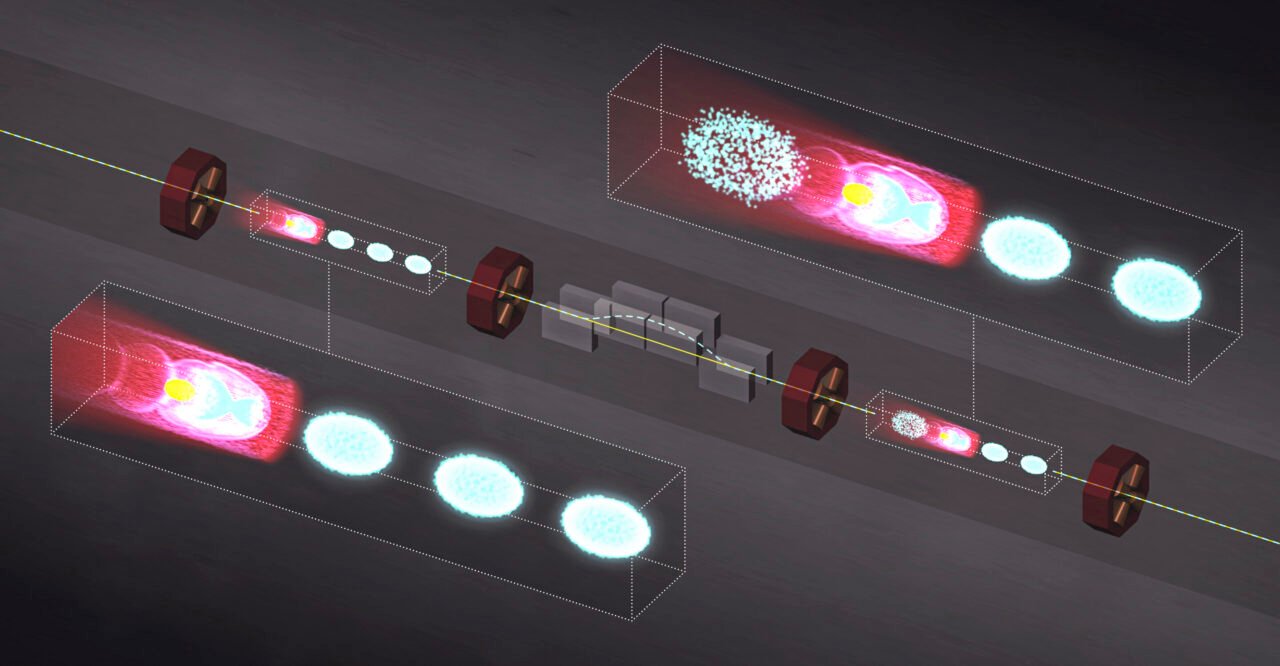Underground Innovation: A New Era in Particle Acceleration
Deep beneath the surface at the SLAC National Accelerator Laboratory, scientist Spencer Gessner unveils an unusual setup from a large metal picnic basket. Contrary to expectations, this basket doesn’t contain food but an array of technical components crucial for advancing particle acceleration technology. These parts, including screws, bolts, and steel tubing, are meticulously arranged to feed fast-moving electrons into plasma, the same material that constitutes the sun.

The Next Generation of Compact Accelerators
Gessner’s mission is ambitious: to create smaller, more powerful particle accelerators. The goal is to enable these accelerators to fit within university labs or hospitals, potentially even paving the way for future high-energy particle colliders. This initiative could revolutionize accelerator science, making it more accessible and enhancing existing technologies. For instance, less powerful X-ray free-electron lasers (XFELs) could become a widespread tool for atomic-scale matter exploration.
Plasma Wakefield Acceleration: The Core Technique
At the heart of this endeavor is plasma wakefield acceleration, a technique being refined at SLAC’s Facility for Advanced Accelerator Experimental Tests II (FACET-II). This method involves sending particle beams through plasma, creating a wake similar to that behind a speeding boat. Electrons injected into this plasma wake can achieve higher energies over shorter distances. FACET-II leverages part of SLAC’s two-mile-long linear accelerator to generate these intense electron beams.
Challenges and Breakthroughs
Despite the promise, achieving extremely high energies in shorter distances is fraught with challenges. However, researchers are making significant progress in overcoming these hurdles, turning what once seemed like science fiction into reality.
Past and Future of Plasma Acceleration Research
The concept of plasma wakefield acceleration has evolved over decades, with SLAC playing a pivotal role. The facility was the first to break the GeV barrier using plasma wakefields. The current focus is on producing high-quality beams over longer distances, a critical step for future high-energy applications.
Innovations in Beam Control
A recent breakthrough involves a computer simulation developed by a team from SLAC and the University of Strathclyde, among others. This simulation demonstrates how plasma accelerators can generate precise, high-quality electron beams by controlling beam brightness. This advancement is crucial for both high-energy physics and X-ray science.
Looking Ahead: Compact Accelerators and XFELs
The future of plasma wakefield acceleration includes stringing together multiple accelerator stages for higher energies, essential for particle colliders. Additionally, a compact XFEL design is being developed at Arizona State University, using lasers instead of magnets to manipulate electron beams, potentially leading to shorter and more efficient accelerators.
On the Ground: Measuring Success
Back at SLAC, Gessner and his colleague Doug Storey are hard at work analyzing beam performance data. Their diagnostic tools measure key parameters of the accelerated beam, providing insights necessary for refining plasma acceleration techniques.
This groundbreaking work at SLAC marks a significant step towards smaller, more accessible particle accelerators, potentially transforming the landscape of scientific research and applications.











